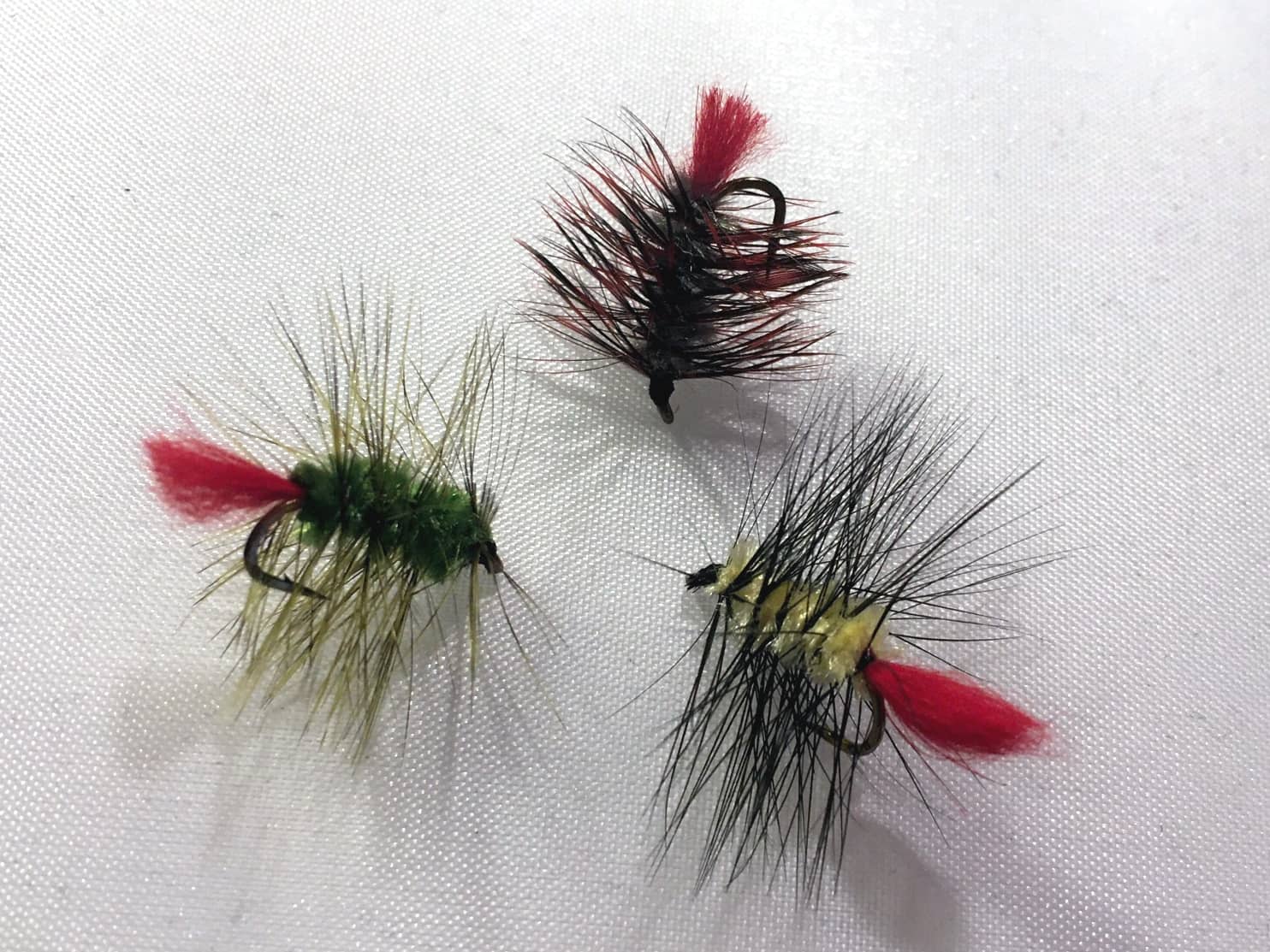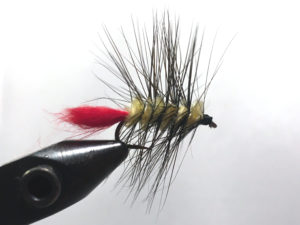
The woolly worm is a great basic pattern that catches a variety of species of fish. Vary the materials and sizes to find the colors and variations that work best in your waters. Simonson Photo.
By Nick Simonson
The woolly worm is a fly pattern steeped in the history of fly angling itself, and many branches and regions of that history claim it as their own.
From trout in Europe to bass in the American southeast to panfish in the upper Midwest, the pattern has many origin stories for its popularity and resurgence, due simply to its easy-to-tie nature and adjustability to any situation and species. From its telling red tail to the simple hackle-over-chenille body, the woolly worm has come about in many places because it’s a quick tie that catches fish. As we kick off a new fly-tying season, it’s a good pattern to shake the rust off with and load up on for spring trout and summer bluegills.
MATERIALS
Hook: 2XL Nymph Size 8-12
Thread: Black 6/0
Tail: Red Antron Yarn
Body: Medium Chenille
Hackle: Wet Hackle
CLICK HERE FOR STEP-BY-STEP TUTORIAL
Start the thread on the hook and tie in a pinch of red Antron yarn for a tail which extends about one-third of a hook length back from the bend (1). Next, tie in a wet hackle feather by the tips and gently stroke the fibers up along the length of the quill (2). Strip the end of a piece of medium chenille and tie it in by the exposed strings (3).
Wrap the chenille forward with tight wraps so that each one touches the previous wrap before it. Tie the chenille off a bit behind the hook eye so there’s room for a thread head and then trim off the excess material (4). Next palmer the hackle over the chenille with even wraps. You’ll notice a slight increase in hackle fiber length as you advance. Tie the hackle off and trim the excess in the same place as the chenille (5). Form a small thread head between the tie-down point and the hook eye, whip finish, cement and the woolly worm is complete (6). 
No panfish box should be without a selection of woolly worms, and they certainly have their place in a selection of trout flies too. For the former, bright and gaudy color schemes are the norm – you can’t tie an ugly combination that bluegills won’t smash. For the latter, natural patterns in olive, brown and black are a good bet for both stocked and wild trout. It isn’t heresy to replace the red tag with a tail of another color, nor is it forbidden to remove it altogether.
If you’ve got chenille with hackle over it, you’ve got a woolly worm of some sort and your creation is likely something that fish in just about any water will snap up on the end of a fly line. Find the pattern and color schemes that work for you.
